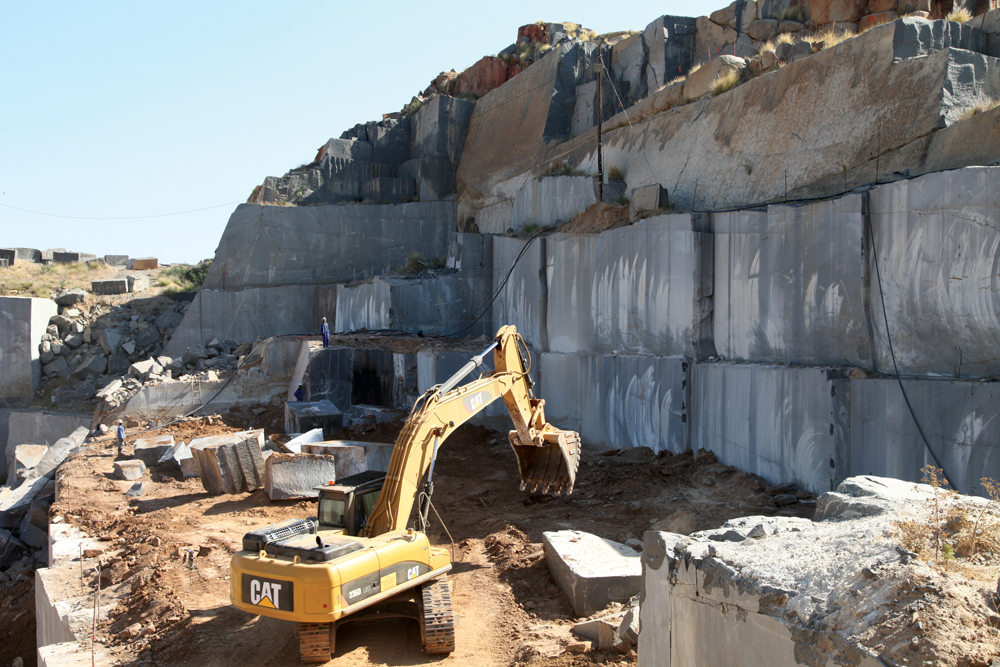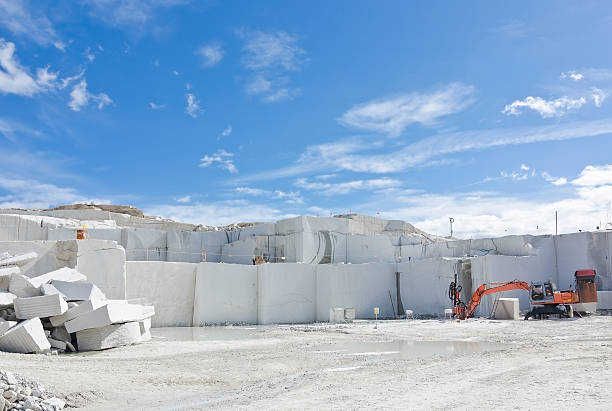Uncovering the Rich Background and Sustainable Practices of Granite Quarrying
As we depend on the precipice of discovering the intricate tapestry of granite quarrying, a journey via time reveals not simply the physical act of drawing out stone yet also the social and historic relevance woven right into the very fabric of this practice. From the old beginnings that laid the structure for modern-day quarrying strategies to the lasting practices that are forming the future of this market, each sculpt mark on granite surfaces narrates waiting to be unearthed (granite quarries in south africa). The tradition of granite quarrying extends much beyond plain removal; it is a testimony to human ingenuity, resilience, and the enduring appeal of this marvelous rock
Old Origins of Granite Quarrying
Going back to ancient worlds, the technique of quarrying granite has actually been an integral part of human history and building improvement. The earliest evidence of granite quarrying go back to old Egypt, where huge pyramids and detailed sculptures were crafted from this long lasting stone. The Egyptians made use of primitive devices to draw out granite blocks from quarries, showcasing the significance of this product in their significant buildings.
Progressing in history, the Greeks additionally made substantial payments to the quarrying of granite. The Greeks used granite in various architectural wonders, such as holy places and sculptures, showing their ability in shaping and sculpting this durable rock. The Romans even more refined the methods of quarrying granite, using innovative devices like blades and hammers to extract and form granite for their famous frameworks.
With the centuries, the technique of quarrying granite has actually progressed, with modern innovations boosting efficiency while maintaining the timeless charm of this natural rock - granite quarries in south africa. From ancient people to contemporary builders, the legacy of granite quarrying remains to shape our world
Advancement of Quarrying Methods
The advancement of quarrying techniques has been noted by a continual progression in the direction of greater efficiency and accuracy in drawing out granite. From the fundamental approaches used by our forefathers to the innovative innovations made use of in contemporary quarrying operations, the industry has gone through significant advancements. Early quarrying strategies involved manual labor with basic devices such as blades, hammers, and wedges to extract granite blocks from the earth. As civilizations advanced, strategies like fire-setting and primitive dynamites were introduced to assist in the removal procedure.
In even more current times, the development of equipment transformed the quarrying industry, enabling much faster removal rates and increased productivity. Technologies such as diamond wire saws, high-pressure water jets, and pneumatically-driven drills have become common in modern quarries, permitting accurate cutting and minimized waste. Moreover, developments in computer-controlled equipment and 3D modeling have optimized quarrying procedures, causing marginal ecological effect and enhanced sustainability practices. As the demand for granite remains to increase, the development of quarrying techniques continues to be important to conference sector needs efficiently and sustainably.
Cultural Value of Granite
Granite holds an extensive social importance throughout different human beings because of its enduring visibility in architectural masterpieces and prized monuments. From the majestic pyramids of Egypt to the intricate carvings of the Angkor Wat holy place in Cambodia, granite has actually been a product of option for expressing grandeur and visite site durability in social heritage. In ancient Rome, granite columns decorated temples and public buildings, signifying stamina and durability. The cultural importance of granite extends beyond its physical features; it personifies durability, stability, and timelessness, making it a sign of sustaining traditions and traditions.

Sustainable Practices in Quarrying
In the middle of the rich background of granite quarrying and its social value exists an expanding emphasis on sustainable techniques within the industry. As environmental recognition and concerns concerning resource exhaustion have heightened globally, the quarrying market has actually increasingly accepted sustainable methods to decrease its influence on the atmosphere and bordering areas.

In addition, improvement and recovery of quarry sites post-extraction are integral to sustainable practices. By bring back quarried areas to an all-natural or helpful state, such as producing wildlife habitats or leisure rooms, quarriers can balance out the ecological footprint of their procedures and add positively visit this site to the neighborhood environment.
Tradition of Granite Quarrying
With a historic background steeped in workmanship and industrial progression, what sustaining impact has granite quarrying left on the landscape of modern-day society? The heritage of granite quarrying goes beyond simple extraction methods; it has formed architectural wonders, metropolitan landscapes, and social heritage worldwide. The resilient nature of granite has actually made it a favored choice for monuments, structures, and framework, standing as a testimony to the skill and virtuosity of quarry workers throughout generations.
Additionally, the financial footprint of granite quarrying can not be neglected. The industry remains to give job see this page opportunity and drive regional economies in regions where granite removal prevails. It has also spurred technological improvements in quarrying techniques and devices, leading to much more reliable and lasting methods.
In regards to sustainability, the tradition of granite quarrying includes efforts to alleviate environmental effects with improvement tasks and liable source management. By stabilizing economic rate of interests with environmental stewardship, the market makes every effort to ensure that future generations can remain to profit from this enduring natural deposit.
Conclusion
